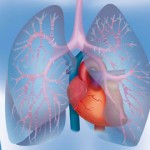In a 2019 randomized trial of 576 patients with ILD associated with SSc, nintedanib slowed lung function decline more over a year than placebo.2
Nintedanib is associated with side effects, including diarrhea, which can be more common in patients with SSc than patients with other diseases.
Proton pump inhibitors are often added to the treatment of patients with SSc-associated ILD because gastroesophageal reflux may worsen ILD, Dr. Mouthon said.
A double-blind, investigator-initiated, randomized, placebo-controlled trial called DESIRES demonstrated the safety and efficacy of rituximab in SSc. Patients receiving rituximab showed improvement in modified Rodnan skin scores and limited the decline of forced vital capacity.3
Chimeric antigen receptor (CAR) T cell therapy, targeting CD19, which involves the use of activated T cells in vitro that are re-injected into the patient, is already used to treat hematological malignancy and is becoming a more common treatment for systemic lupus erythematosus (SLE) and SSc, Dr. Mouthon said. There are ongoing randomized clinical trials in Europe investigating these applications.
Other studies are evaluating newer treatments, such as targeting the interferon alpha pathway with anifrolumab or treating pulmonary arterial hypertension with sotatercept, for SSc.
Dr. Mouthon cited a recent review article in Nature Reviews Rheumatology, which he co-authored, as a useful overview on the future of SSc research.4
PMR Management
Although polymyalgia rheumatica (PMR) is commonly seen by internal medicine specialists, patients with suspected PMR should be referred to a rheumatologist if they have atypical features, are young, have prominent peripheral arthritis or have an inadequate response to or difficulty with glucocorticoid tapering, according to Enrica Cipriano, MD, rheumatology researcher at Sapienza University of Rome.
Up to 30% of patients with PMR can develop giant cell arteritis (GCA), said Dr. Cipriano. GCA can precede, accompany or follow a PMR diagnosis.
“When we screen a patient for PMR, we always have to search for warning symptoms of [GCA],” said Dr. Cipriano. These may include vision loss, a severe headache or tongue pain among other symptoms.
Additionally, “High fever, weight loss and adenopathy could [indicate] giant cell arteritis or malignancies,” she said.
Some patients with PMR who also have GCA can manifest swelling of the hands.
Imaging techniques are not always needed to diagnose PMR but can help with an unusual presentation. “Ultrasonography has a central role in the diagnosis and screening of patients because it allows us to see joints and peri-articular tissue and to study the artery wall,” Dr. Cipriano said.
